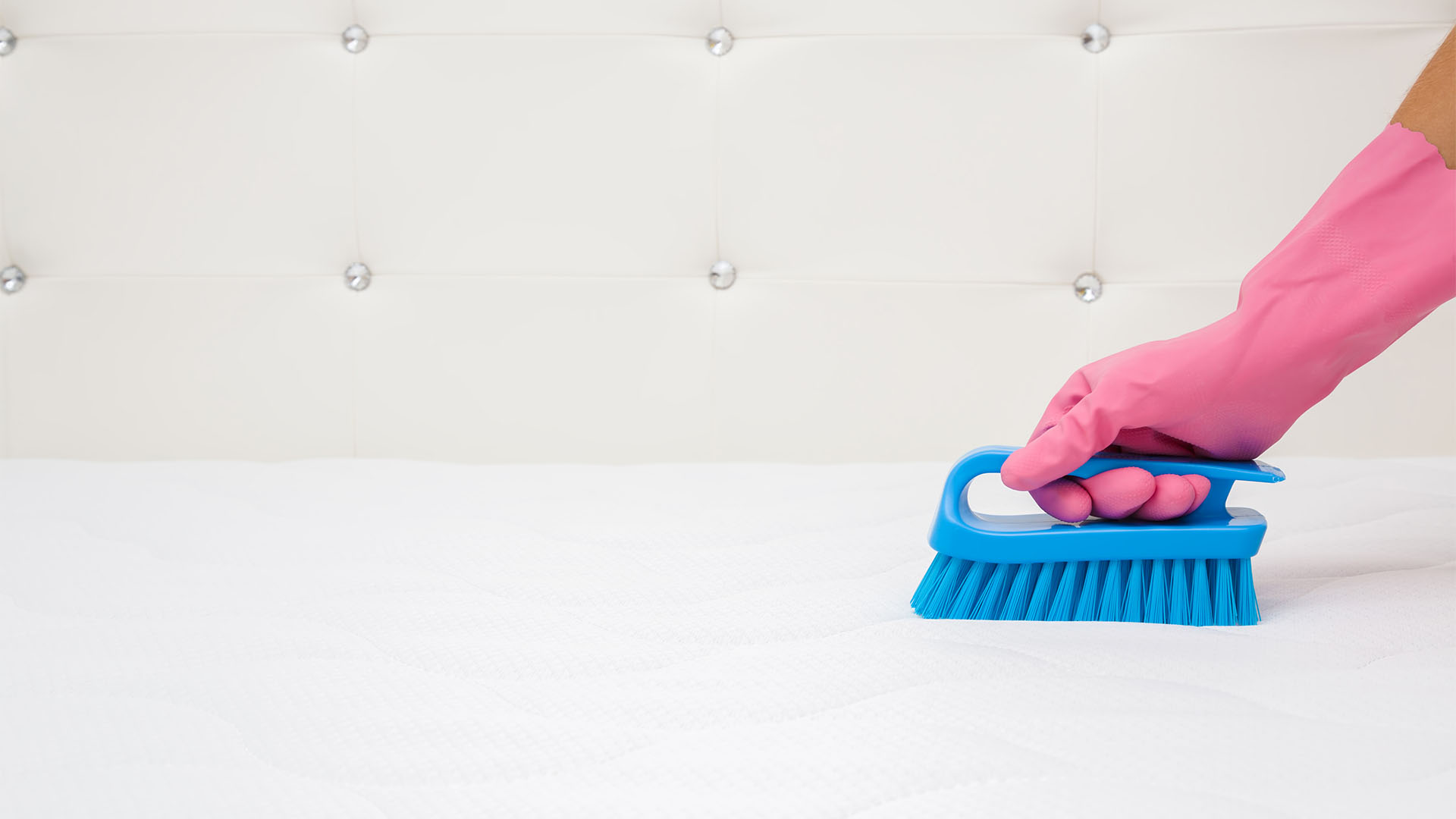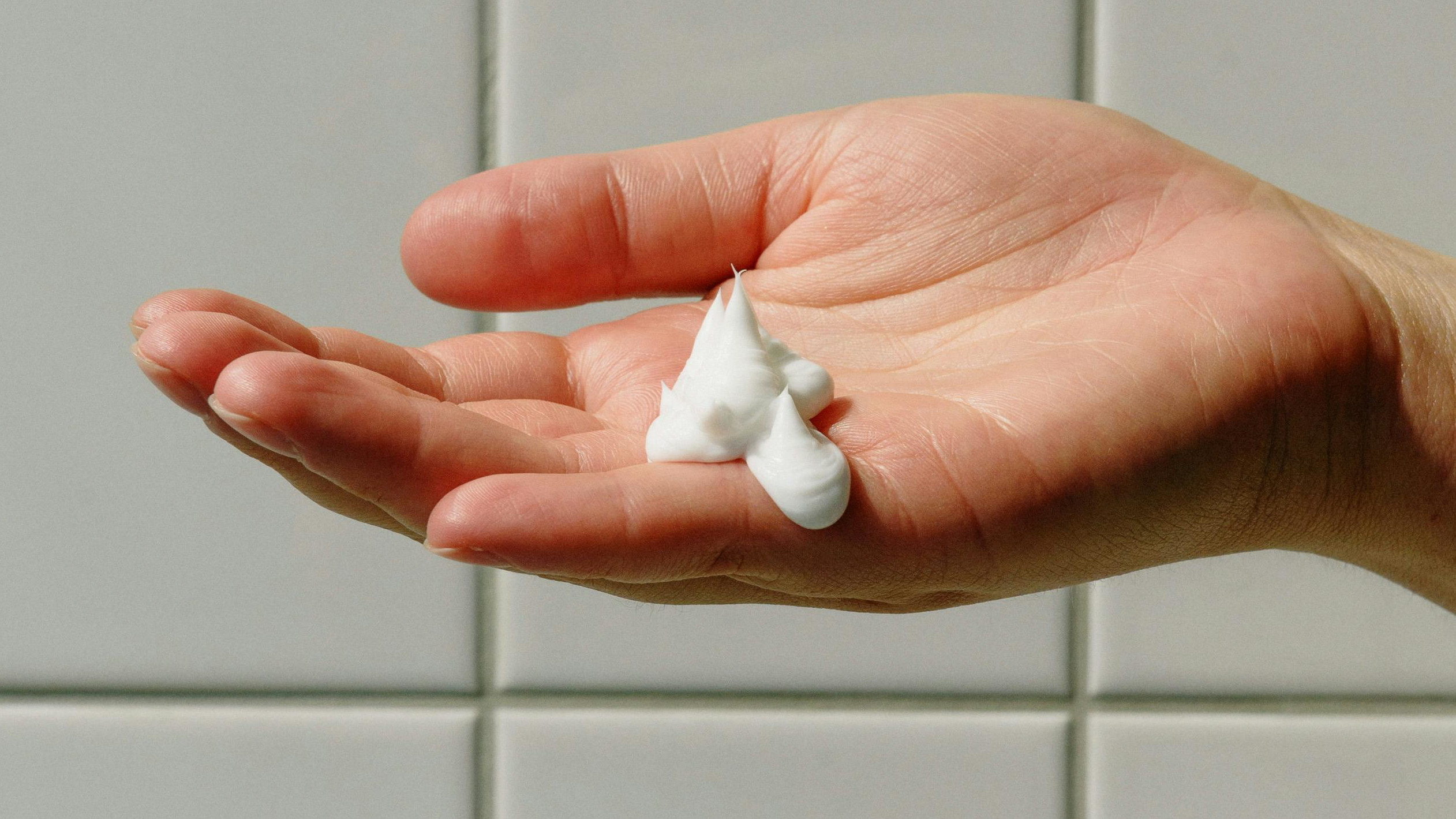
If you’ve spotted stains and yellowing on your mattress, there is hope for removing them — and weirdly it comes in the form of shaving foam. Yes, thanks to cleaning influencers on TikTok, shaving foam is the latest household staple being drafted in to help remove stains from mattresses.
Stains can appear on all types of beds, and they‘re usually caused by urine, vomit, food and drink spills, or the build up of sweat, body oils and dead skin. It's important to tackle stains as soon as you notice them. Why? Because stains can, depending on their cause, accelerate the breakdown of your mattress, leading to uneveness and premature sagging.
If that happens, it's probably time to invest in a new bed — and our top recommendations for this year’s best mattresses for all sleepers and budgets will help you easily find your dream bed. For now, here’s what you need to know about using shaving foam to clean your mattress and remove stains…
What is the TikTok shaving foam mattress cleaning hack?
So, it turns out the best way to get rid of stains on your mattress has been lurking within your bathroom cupboard all this time. This TikTok hack uses shaving foam to clean and refresh your mattress. Not only is this hack super effective, but it's also simple and cheap.
@alifebetterorganized ♬ original sound - A Life Better Organized
Why are people using shaving foam to clean a mattress?
There are a number of reasons shaving foam is suitable for cleaning mattresses. It has a thick and creamy consistency, so it’s easier to spread over surfaces and ensures you get full and even coverage. It also contains surfacants, compounds which lower the surface tension between liquids and solids. This means shaving foam gets into the fabric and helps to loosen stains.
Shaving foam is mostly made up of water and mild soap agents. These are effective at dissolving water-soluble stains, and the detergents can also help to break down dirt and oils to help make stains a lot easier to remove. Some shaving foams also contain mild abrasives which mean you don’t have to scrub at the stains and risk damaging the fabric.
Then there's the foaming action. Foam creates a barrier that keeps the cleaning agents in contact with stains for longer — it’s this prolonged contact that allows the active ingredients to effectively get stains clean. What's more, the thickness of the foam means it won’t saturate the mattress, something which is extra important for materials like memory foam which can be damaged by prolonged contact to liquids.
How to remove mattress stains with shaving foam — our step by step guide
This TikTok shaving foam mattress cleaning hack has become popular for two reasons: it's simple, and it's effective. You don't need special equipment to do it properly, either. Here’s a step-by-step guide on how to do it.
What you’ll need:
- Shaving foam
- Soft cloth/soft bristle brush (optional)
- Microfiber cloth
- Spray bottle
- White vinegar
- Vacuum
1. Remove bedding and vacuum your mattress
Before you apply any shaving foam you first need to prepare your bed. Strip all of your bedding and pop it in the wash while you're cleaning. Then fully vacuum your mattress surface. Use the upholstery and stick attachment, and thoroughly cover the whole surface, ensuring you get right in the corners and edges. This will remove any loose dirt and debris, and also get rid of any dust mites that could be lurking.
2. Apply the shaving foam
Make sure you use the right type of shaving foam — a regular, non-gel shaving foam is important, one that's foamy right out of the can rather than one which foams in your hands. If you can, try to avoid foams which include any added fragrances, as these might stain the mattress further or cause skin irritation.
Once you’ve found the right shaving foam, apply a generous amount directly to the mattress. You don’t need to cover the entire mattress, just stick to any stained or dirty areas.

3. Spread the shaving foam on the stains
Now its time to work the foam into the stain. You can do this with your hands if you like, but you may find that you get better results by using a soft cloth or soft bristle brush.
Spread the foam evenly across the stain, making sure you cover the whole area. Working it into the mattress ensures that the foam penetrates the fabric, allowing it to get to work removing the stubborn stain. Be careful not to aggressively rub the area, though. Use more of a dabbing or patting motion.
4. Let the foam sit on your mattress
It's vital to to give the foam enough time to work. Once you've applied foam onto the stain, leave it for between 15-30 minutes. This should be enough time for the active chemicals to get to work on breaking things down.
For particularly stubborn stains you'll need to leave the foam on for longer. However, if the stain is relatively fresh you'll be able to get away with leaving it on for less — stick to a minimum of 15 minutes. As always, the longer you leave it to work, the better it will work.
5. Remove the excess foam
Once you've let it sit for long enough, it's time to remove any excess foam. Grab a damp microfibre cloth and gently wipe away the shaving cream. Make sure that all residue is removed to avoid attracting more dirt. Just be mindful to ensure your cloth isn't too wet, because the last thing you want to do is to saturate the surface of your mattress.
6. Rinse with white vinegar
To ensure that all the shaving foam has been removed, grab a clean, empty spray bottle and add one part water and one part white vinegar. Lightly shake to combine the two ingredients together, then spritz the area with your cleaning solution before blotting to remove any excess moisture.
Again, be careful not to rub the area. If you do, you will risk making the stain worse. Also, don't apply too much liquid so as not to damage the mattress fibres.
7. Let your mattress dry fully
It's important to give yourself enough time to complete this cleaning task. You'll need to leave the mattress to dry fully before you put your sheets back on.
You can speed up the drying process by opening up your windows or by using a fan to circulate the air. The mattress must be fully dry before you sleep on it again. If it's not, you risk mold and mildrew growing within your mattress.







